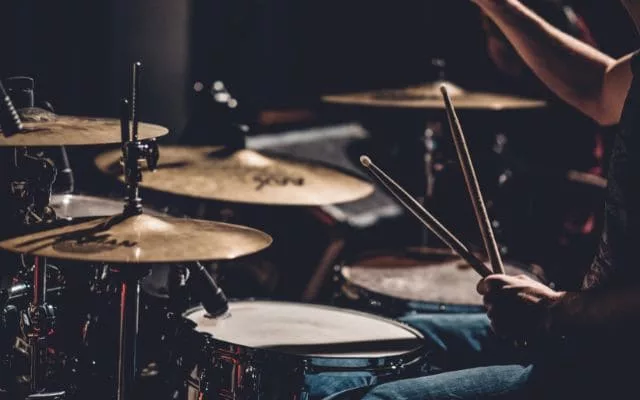Drum sets, also known as drum kits, are the heartbeat of many musical genres.
They consist of various components, each with a unique purpose, that when combined, produce the captivating rhythms we hear in music.
Whether you’re a beginner looking to learn about drum sets or an experienced drummer seeking to enhance your knowledge, this guide is for you.
Let’s embark on a rhythmic journey as we dissect and discuss the different parts of a drum set.
Parts of a Drum Set
The Drum Shells
Drum shells are the core of a drum set. They come in various sizes and materials, each influencing the drum’s sound. The three primary types of drum shells are:
- Bass Drum: The largest shell, responsible for the deep, low tones that anchor a beat.
- Snare Drum: Characterized by its distinctive, crisp sound and the snare wires beneath the drumhead.
- Tom-Toms: Smaller drums, often mounted on the bass drum or on a separate stand, used for melodic accents.
Drumheads
The drumheads are the surface you strike with drumsticks or mallets. They greatly impact the tone and resonance of the drums. Drumheads consist of:
- Batter Head: The top drumhead that you strike, responsible for the drum’s primary tone.
- Resonant Head: The bottom drumhead, which influences the drum’s overall sound and sustain.
Hardware
Drum hardware includes all the metal components that support and adjust the drum set. Key pieces of hardware include:
- Drum Pedals: Used to control the bass drum and hi-hat cymbals.
- Cymbal Stands: Supports for crash, ride, and hi-hat cymbals.
- Snare Stand: Holds the snare drum in place.
- Tom Mounts: Attachments for mounting tom-toms.
Cymbals
Cymbals add a shimmering and often explosive element to drumming. The main types of cymbals are:
- Hi-Hats: Consisting of two cymbals controlled by a foot pedal, they produce a crisp “chick” sound when closed.
- Crash Cymbals: Used for impactful accents and explosive crashes.
- Ride Cymbal: Known for its smooth, rhythmic tones used for steady patterns.
- Splash and China Cymbals: Specialized cymbals for unique effects.
Sticks and Mallets
Choosing the right drumsticks or mallets is crucial for achieving the desired sound and technique. Varieties include:
- Drumsticks: Available in various sizes and materials, each providing a different feel and sound.
- Mallets: Used for striking percussion instruments, such as the vibraphone or marimba.
Drum Throne
A comfortable and adjustable drum throne is essential for maintaining proper posture and playing comfortably during long sessions.
Drum Tuning
Tuning your drums correctly is a skill that affects the overall sound of your kit. Experiment with different tensions to find your desired tone.
FAQs
What is the purpose of the resonant head on a drum?
The resonant head on a drum influences the drum’s overall sound and sustain. It acts as the bottom drumhead and helps shape the tone produced by the drum.
How do I choose the right drumsticks?
Choosing the right drumsticks depends on your playing style and the sound you want to achieve. Experiment with different sizes and materials to find the perfect fit.
What is the role of a drum throne?
A drum throne provides a comfortable and adjustable seat for drummers, ensuring proper posture and comfort during extended playing sessions.
Can I use the same drumsticks for all types of drums?
While you can use the same drumsticks for different drums, it’s recommended to experiment with various sizes and materials to achieve the best sound and technique for each drum.
How do I tune my drums?
Drum tuning involves adjusting the tension of the drumheads to achieve the desired pitch and tone. Experiment with different tensions until you find the sound you prefer.
What are the different types of cymbals used in drum sets?
Drum sets typically include hi-hats, crash cymbals, ride cymbals, and sometimes splash and china cymbals, each serving a unique purpose in creating a dynamic drumming experience.
Conclusion
Mastering the art of drumming requires a deep understanding of the parts that make up a drum set.
From the drum shells to the cymbals, each component plays a vital role in creating the rhythm and sound that defines your music.
By exploring the various parts of a drum set, you can enhance your drumming skills, experiment with different sounds, and become a more versatile and accomplished drummer.
So, whether you’re a beginner or an experienced drummer, remember that the magic happens when you strike the right chord with each part of your drum set.

